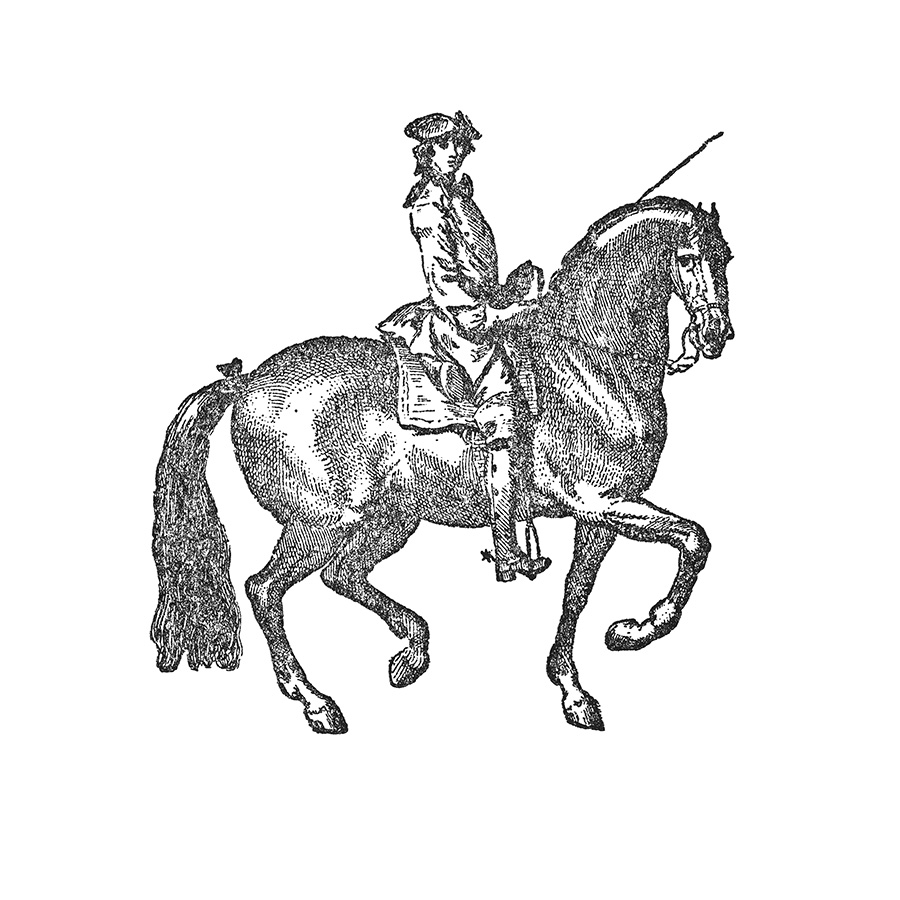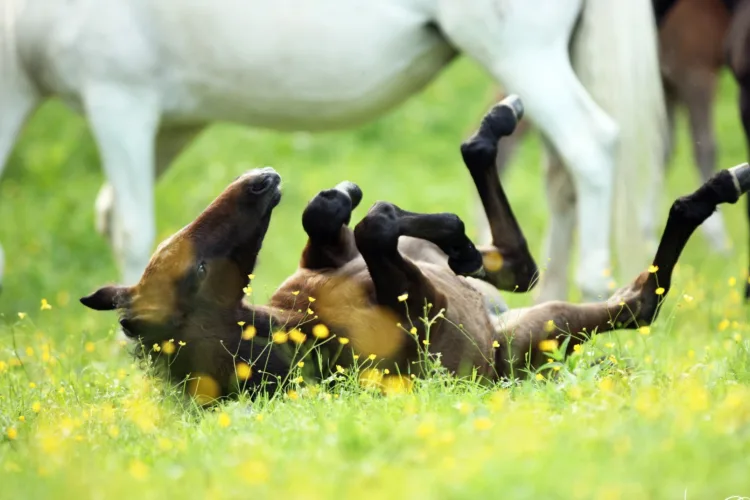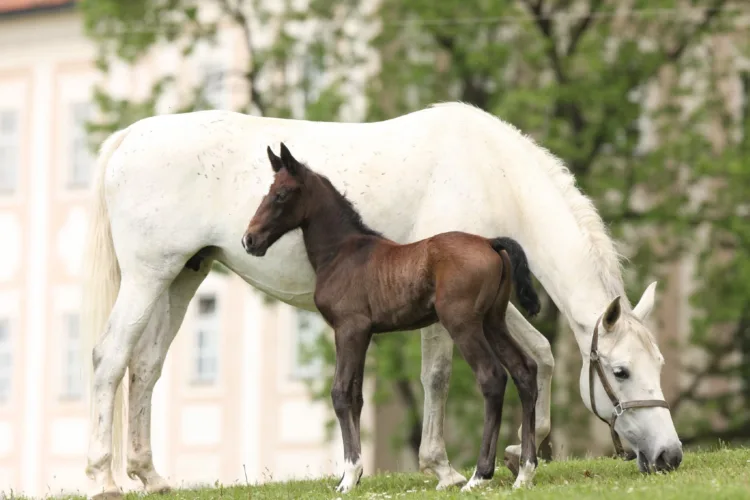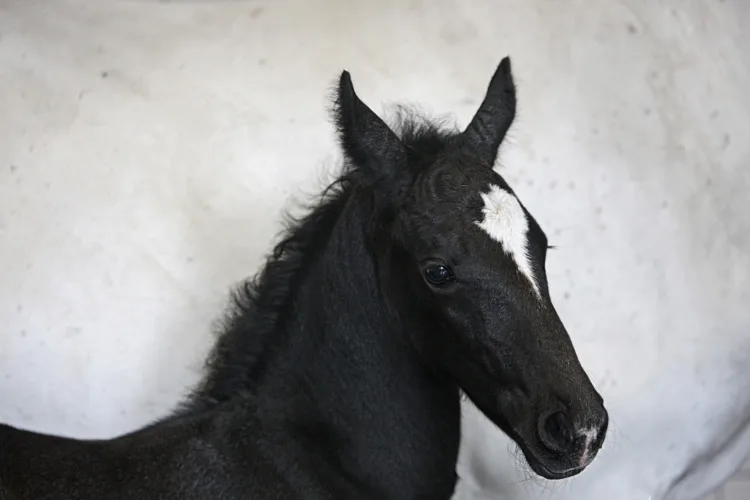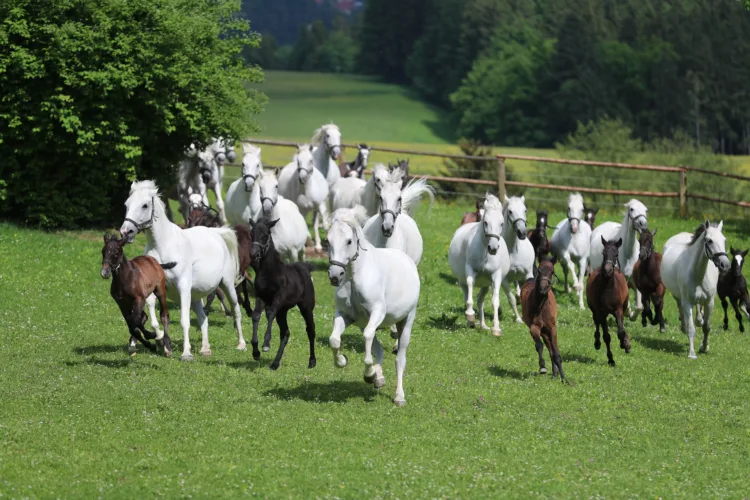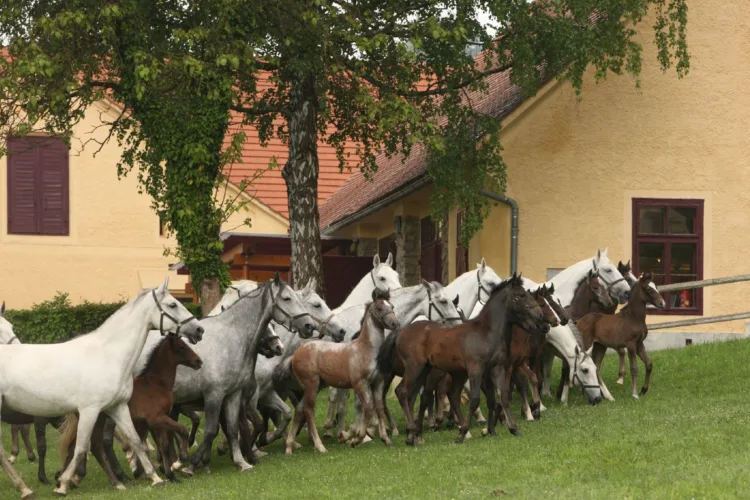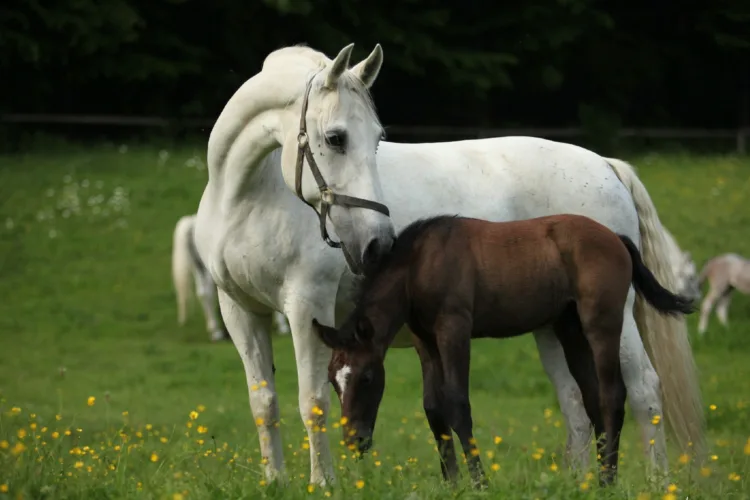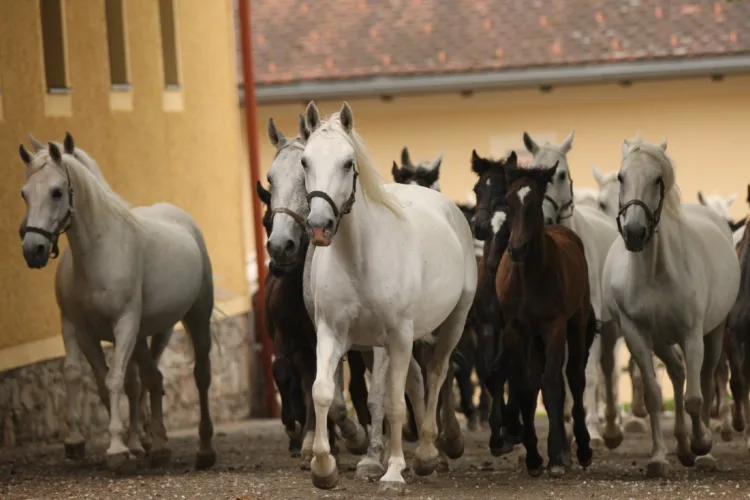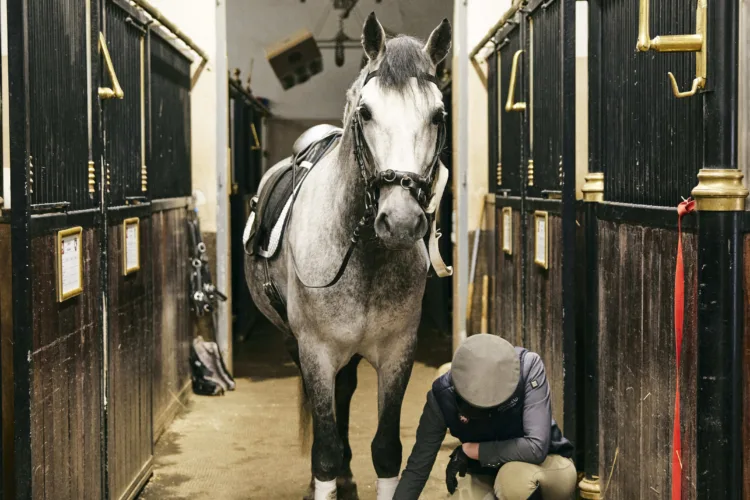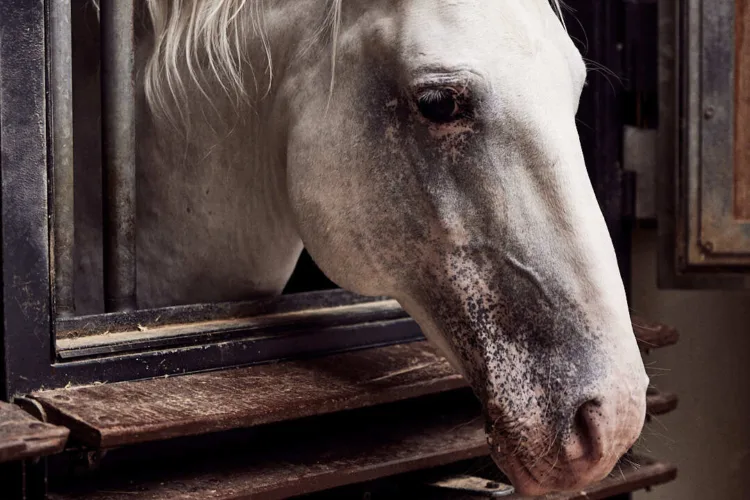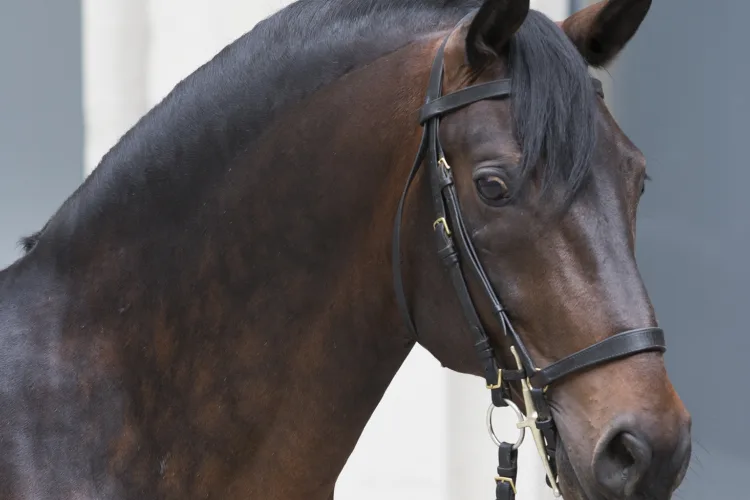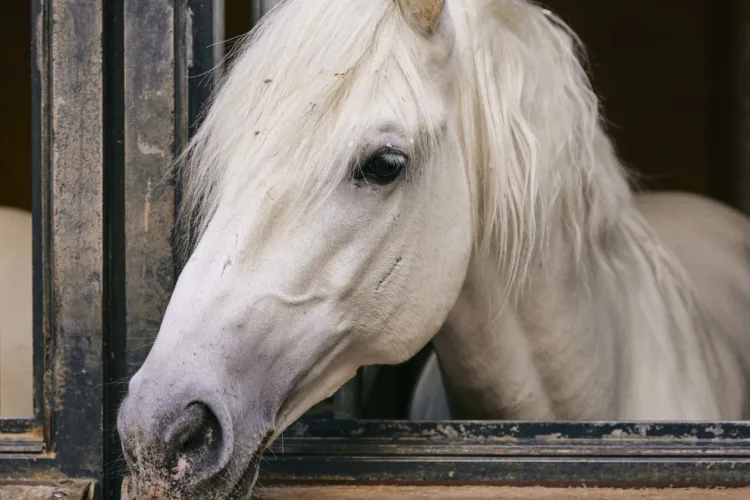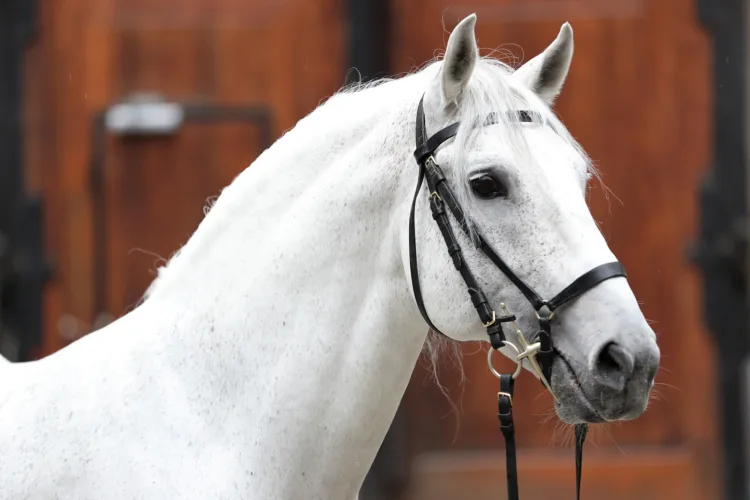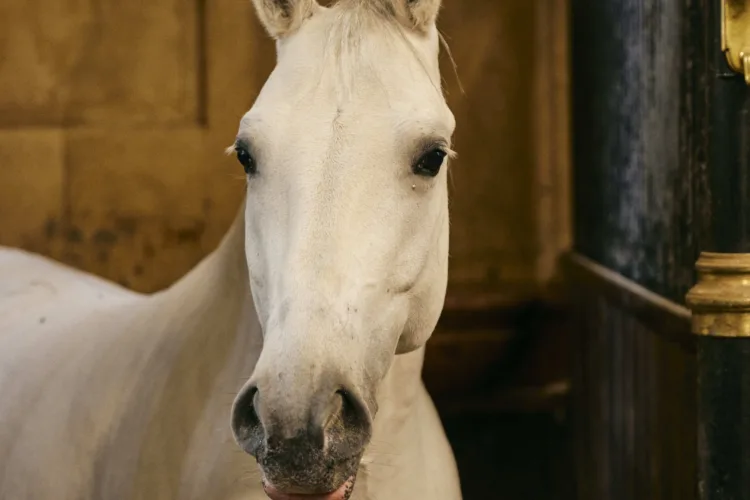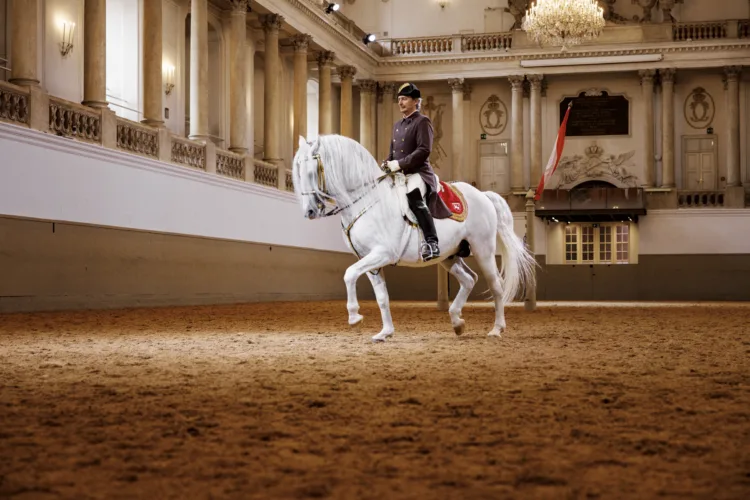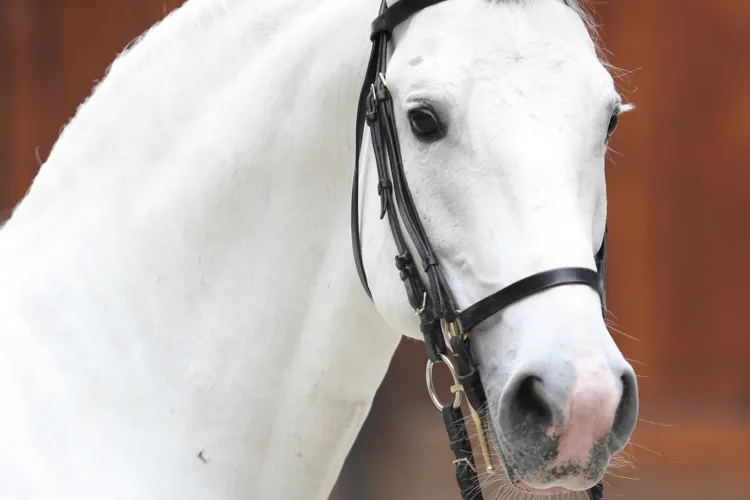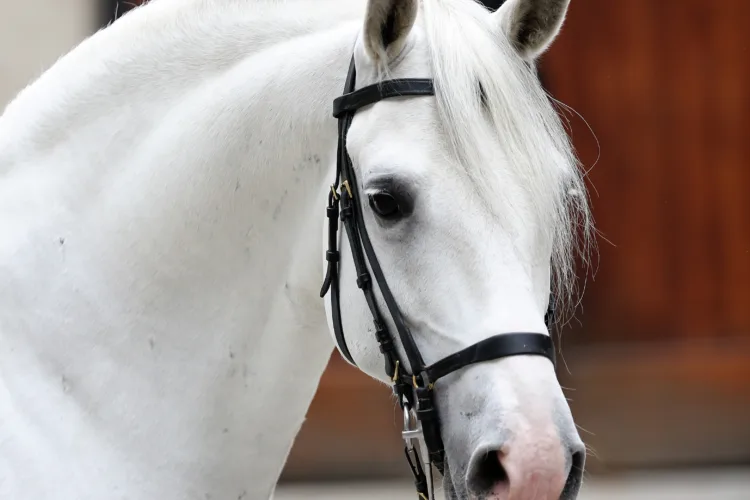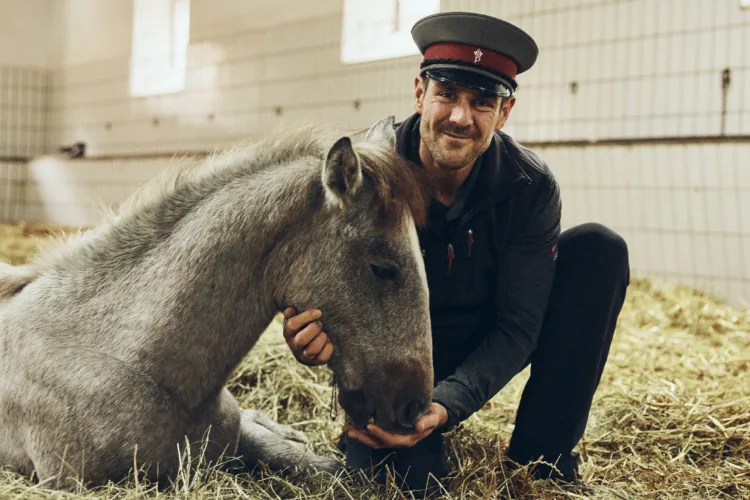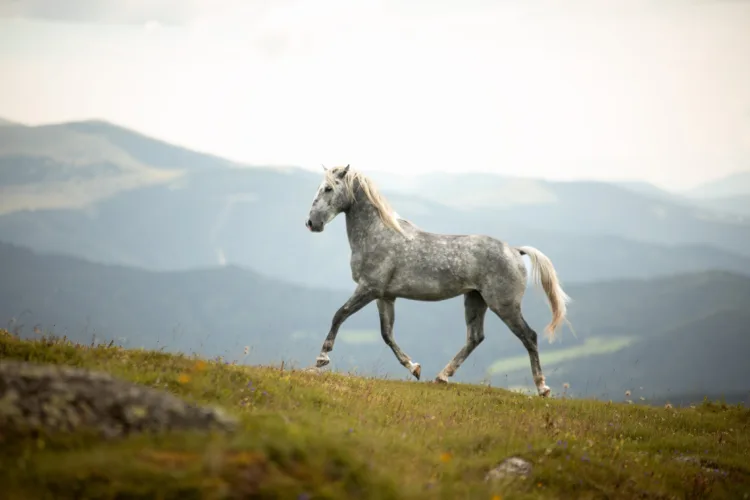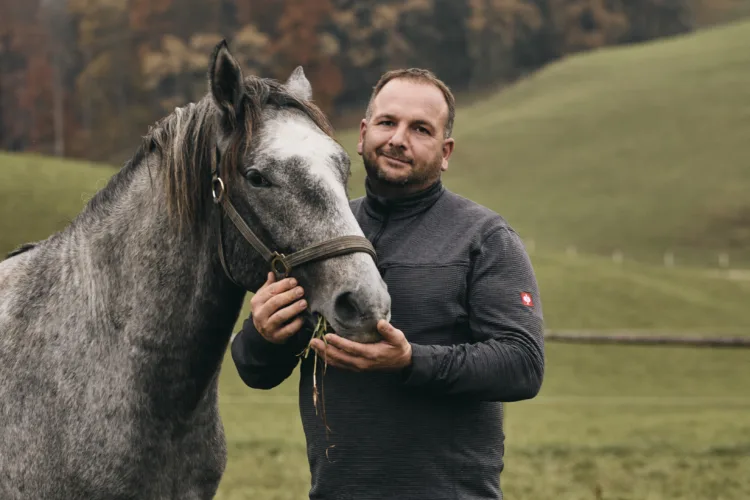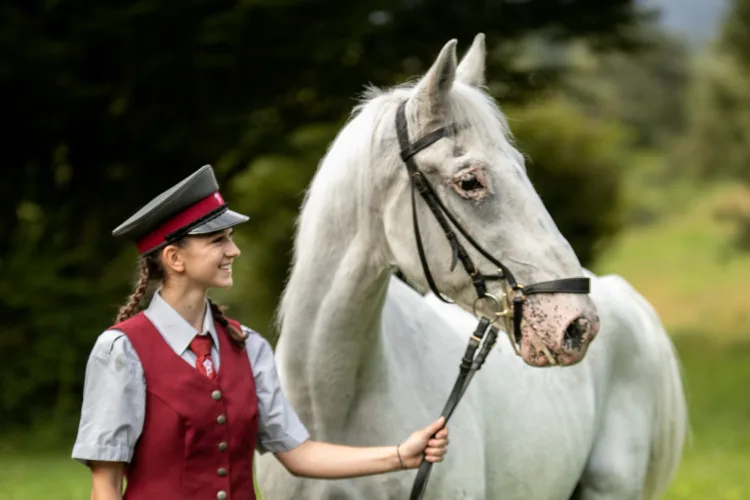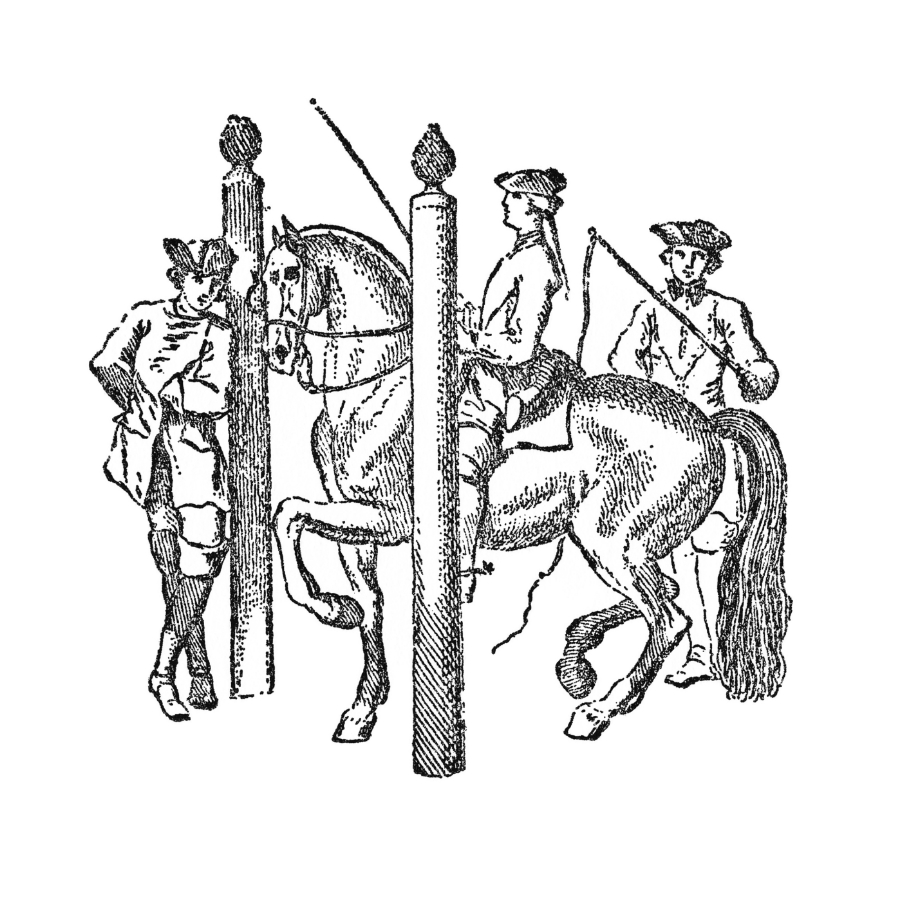
Discipline, elegance, consistency, lightness, precision and harmony are all hallmarks of the Lipizzaner, the oldest cultural horse breed in Europe.
Lipizzaners are characterised by their compact, elegant body, graceful movements, eagerness to learn, spirited nature, good temper, courage, toughness and stamina. The shapely head of the Lipizzaner may sometimes feature a Roman nose. It has a high-set neck, carried proudly and nobly. The muscular back runs through to powerful hindquarters. The appearance corresponds to that of a Baroque-style ceremonial horse, although its overall build is rather rectangular. It also possesses a thick, well-set tail with fine hair. Boasting profiled limbs, it has well-formed ankle joints and beautifully shaped hooves.
Find out interesting facts and entertaining anecdotes about the world-famous white horses.
The breeding of Lipizzaners
Lipizzaner breeding is classed as a national intangible cultural heritage of humanity
By breeding Lipizzaners in Piber, we not only ensure the continued existence of the Spanish Riding School’s Lipizzaner stallions, but also contribute to the preservation of the oldest cultural horse breed in Europe. In 2016, this responsible task was recognised by UNESCO as a national intangible cultural heritage and, in 2022, as a cultural heritage of humanity as part of a multinational submission.
The breeding of Lipizzaners at the stud farm in Piber goes back to six Lipizzaner stallion lines and 17 classic dam lines that existed in the eighteenth century.
At that time, the “Lipizzaners” were a varied bunch: brown, chestnut, dun, dapple grey, dapple black, tiger striped and black... but not a single one was white. The white colour became established towards the end of the eighteenth and in the nineteenth century and has been preserved to this day. This colour came to be preferred for aesthetic reasons. In addition, the white hair of the Arab has proven to be dominant, so that today the dark (mainly brown) coat rarely makes an appearance. That said, it is a tradition of the Spanish Riding School to always have at least one brown Lipizzaner in the stables of the Riding School. They are thought to bring good luck!

Stallion lines
There are eight stallion lines worldwide. We breed with six stallion lines:
- Pluto (white), born 1765, pure Spanish descent, from the Fredriksborg court stud farm in Denmark
- Conversano (black), born 1767, original Neapolitan
- Neapolitano (brown), born 1790, Neapolitan from Polesina
- Favory (dun), born 1779, from the Kladrub court stud farm
- Maestoso (white), born 1773, from the Kladrub court stud farm
- Siglavy (white), born 1810, original Arab, imported from Arabia by Prince Schwarzenberg
The dam line families
The Lipizzaner Stud Piber breeds with all 17 classic dam lines. This makes the Lipizzaner Stud Piber the only stud farm in the world to have mares from all the classic Lipizzaner dam lines. The matriarchs of these dam lines were born in the eighteenth century and formed the basis of the imperial stud farm. Their descendants can be traced back without a break to each respective family founder.
- Sardinia Sardinia. Lipizza 1776
- Spadiglia Spadiglia, Lipizza 1778
- Argentina Argentina, Lipizza 1767
- Africa Africa, Kladrub 1747
- Almerina Almerina, Kladrub 1769
- Presciana - Bradamente Presc./Bradm., Kladrub 1782/1777
- Englanderia Englanderia, Kladrub 1773
- Europa Europa, Kladrub 1774
- Stornella - Fistula Fistula, Koptschan 1771
- Ivanka - Famosa Ivanka, Koptschan 1754
- Deflorata Deflorata, Fredriksborg 1767
- Capriola Capriola, Kladrub 1785
- Rava Rava, Kladrub 1755
- Gidrane Gidrane, 1841
- Djebrin Generale Junior, Babolna 1824
- Mercurio Freies stud farm, Radautz 1806
- Theodorosta Theodorosta, Bukovina 1870
The characteristics of a Lipizzaner
Height to withers:
153 to 158 cm
Appearance:
Noble, with a stately expression and a rectangular to square frame
Head:
Slight ram head or slightly Arab head with a convex nasal line, strong jowls and large, black eyes
Effect:
Medium-sized, athletic, elegant
Build:
Muscular hindquarters, sloping pasterns, medium-length strong back
Movements:
Graceful, springy gait, high knee action
Coat:
More than 90% white
Character:
full of stamina, undemanding, spirited, hardy, highly sensitive, intelligent, people-oriented, sociable, obedient, quick to learn and willing to perform
Development:
Late maturity, above-average longevity, suitable for breeding and work under the saddle well into old age
The life cycle of the Lipizzaner
“Remontenschule”, “Campagneschule”, High School of Classical Horsemanship
From paddock to capriole
The training of the stallions, who progress from the Lipizzaner Stud Piber to the training centre in Heldenberg or Vienna at the age of around four, is based on the principles of classical equestrianism and designed according to the directives of Excellency Holbein and Chief Rider Franz Meixner. The primary goal of this training does not differ greatly from any other form of horse training and can be summarised as the achievement of suppleness, obedience, responsiveness and calmness.
The aim of classical equestrianism is to study the natural movements of the horse and to cultivate the greatest possible elegance through systematic training in the High School of Classical Horsemanship. During training, horse and rider are always on an equal footing, and the horse decides when he is ready to learn the next skill. This approach results in an incomparable harmony between rider and stallion, which today is only achieved at the Spanish Riding School Vienna.
Lipizzaners are particularly well suited to this task: not only are they undemanding, strong and truly talented for classical equestrianism, they are also quick to learn and have an extraordinarily good memory – all qualities that the trainer must be aware of and make good use of in their work together.
The training process
- The “Remontenschule”: In the first year, Remonte training is used, which involves riding the horse in as natural a position as possible on the straight and in non-collected gaits.
- The Campagne school: This involves riding the assembled horses in all gaits, with turns and tours executed in perfect balance.
- The High School of Classical Horsemanship: At this advanced stage of training, the rider brings their horse to perfection. What happens now depends on the particular aptitude, talent, strength and sensitivity of the stallion and on what he offers. In the highest collective, the stallion learns piaffe, passage, gallop pirouettes and flying changes from stride to stride.
It takes six years on average before a stallion can be included in the School Quadrille, which also means that he has completed his training as a School Stallion. The famous school jumps of the “schools above the ground” – levade, courbette and capriole – are only mastered by a few exceptionally talented and sensitive stallions.
After six to eight years of training, the Lipizzaner stallions finally reach the point where they are the stars and perform in what is arguably the most beautiful riding arena in the world. In the Spanish Riding School’s winter riding arena in Vienna, they perform the skills they have learned and inspire international audiences.
A Lipizzaner's life
The Lipizzaner Stud Piber is home to the Lipizzaner mares from birth to old age. The stallions periodically return to the place of their birth throughout their lives, and ultimately spend their well-deserved retirement at Piber.
Foals remain with their mothers for the first few months after birth and grow up in a herd of broodmares and other foals. Upon weaning at the age of six to eight months, the foals are moved to an outpost in a foal herd, where they spend the next six months. When they are one year old, the young stallions and mares are separated by gender and spend the next few years on different alpine pastures during the summer months, returning to their local outpost for the winter.
After spending their childhood and youth at the stud farm and on the alpine pastures, all the Lipizzaners, regardless of gender, are taken to be inspected. A special commission assesses the character, behaviour and physical build of each horse. Those that pass the inspection start their training – the Lipizzaner mares in Piber, the Lipizzaner stallions at the training centre in Heldenberg near Vienna. Horses that are not selected at this point are released for sale.
After the selection process, the mares undergo a two-year training programme and have to pass an examination under saddle and in carriage driving in order to be used as breeding or representational horses.
While the stallions spend their days at the Spanish Riding School in Vienna and the training centre in Heldenberg near Vienna, the Lipizzaner broodmares and representational mares enjoy their days at the main stud farm in Piber. Between the ages of 25 and 30, both the Lipizzaner mares and stallions start their well-deserved retirement at the Lipizzaner Stud Piber – where they are housed in a specially designated retirement stable – and spend their sunset years in beautiful Western Styria.
